Lipoxin A₄ prevents the progression of de novo and established endometriosis in a mouse model by attenuating prostaglandin E₂ production and estrogen signaling
- PMID: 24587003
- PMCID: PMC3933674
- DOI: 10.1371/journal.pone.0089742
Lipoxin A₄ prevents the progression of de novo and established endometriosis in a mouse model by attenuating prostaglandin E₂ production and estrogen signaling
Abstract
Endometriosis, a leading cause of pelvic pain and infertility, is characterized by ectopic growth of endometrial-like tissue and affects approximately 176 million women worldwide. The pathophysiology involves inflammatory and angiogenic mediators as well as estrogen-mediated signaling and novel, improved therapeutics targeting these pathways are necessary. The aim of this study was to investigate mechanisms leading to the establishment and progression of endometriosis as well as the effect of local treatment with Lipoxin A4 (LXA₄), an anti-inflammatory and pro-resolving lipid mediator that we have recently characterized as an estrogen receptor agonist. LXA₄ treatment significantly reduced endometriotic lesion size and downregulated the pro-inflammatory cytokines IL-1β and IL-6, as well as the angiogenic factor VEGF. LXA₄ also inhibited COX-2 expression in both endometriotic lesions and peritoneal fluid cells, resulting in attenuated peritoneal fluid Prostaglandin E₂ (PGE₂) levels. Besides its anti-inflammatory effects, LXA₄ differentially regulated the expression and activity of the matrix remodeling enzyme matrix metalloproteinase (MMP)-9 as well as modulating transforming growth factor (TGF)-β isoform expression within endometriotic lesions and in peritoneal fluid cells. We also report for first time that LXA₄ attenuated aromatase expression, estrogen signaling and estrogen-regulated genes implicated in cellular proliferation in a mouse model of disease. These effects were observed both when LXA₄ was administered prior to disease induction and during established disease. Collectively, our findings highlight potential targets for the treatment of endometriosis and suggest a pleotropic effect of LXA₄ on disease progression, by attenuating pro-inflammatory and angiogenic mediators, matrix remodeling enzymes, estrogen metabolism and signaling, as well as downstream proliferative pathways.
Conflict of interest statement
Figures
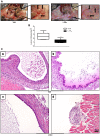
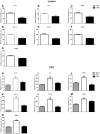

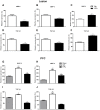
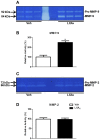
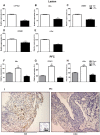

References
-
- Eskenazi B, Warner ML (1997) Epidemiology of endometriosis. Obstet Gynecol Clin North Am 24: 235–258. - PubMed
-
- Bulun SE (2009) Endometriosis. The New England journal of medicine 360: 268–279. - PubMed
-
- Gruppo Italiano per lo Studio dE (2001) Relationship between stage, site and morphological characteristics of pelvic endometriosis and pain. Hum Reprod 16: 2668–2671. - PubMed
-
- Waller KG, Shaw RW (1993) Gonadotropin-releasing hormone analogues for the treatment of endometriosis: long-term follow-up. Fertility and sterility 59: 511–515. - PubMed
-
- Vercellini P, Crosignani P, Somigliana E, Vigano P, Frattaruolo MP, et al. (2011) ‘Waiting for Godot’: a commonsense approach to the medical treatment of endometriosis. Hum Reprod 26: 3–13. - PubMed
Publication types
MeSH terms
Substances
LinkOut - more resources
Full Text Sources
Other Literature Sources
Medical
Research Materials
Miscellaneous

